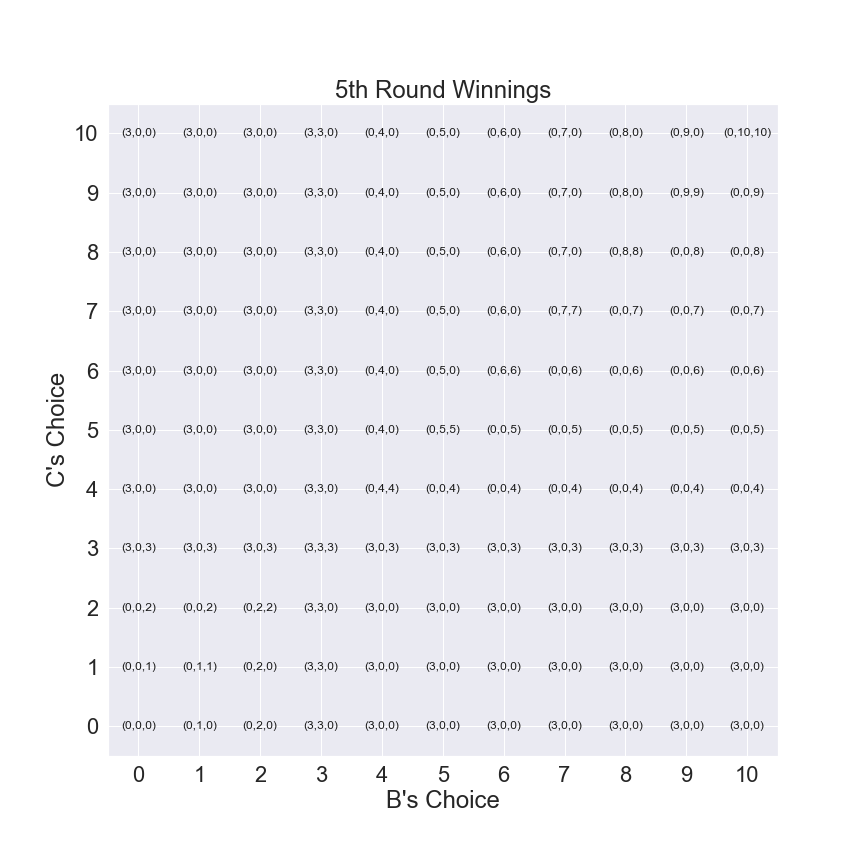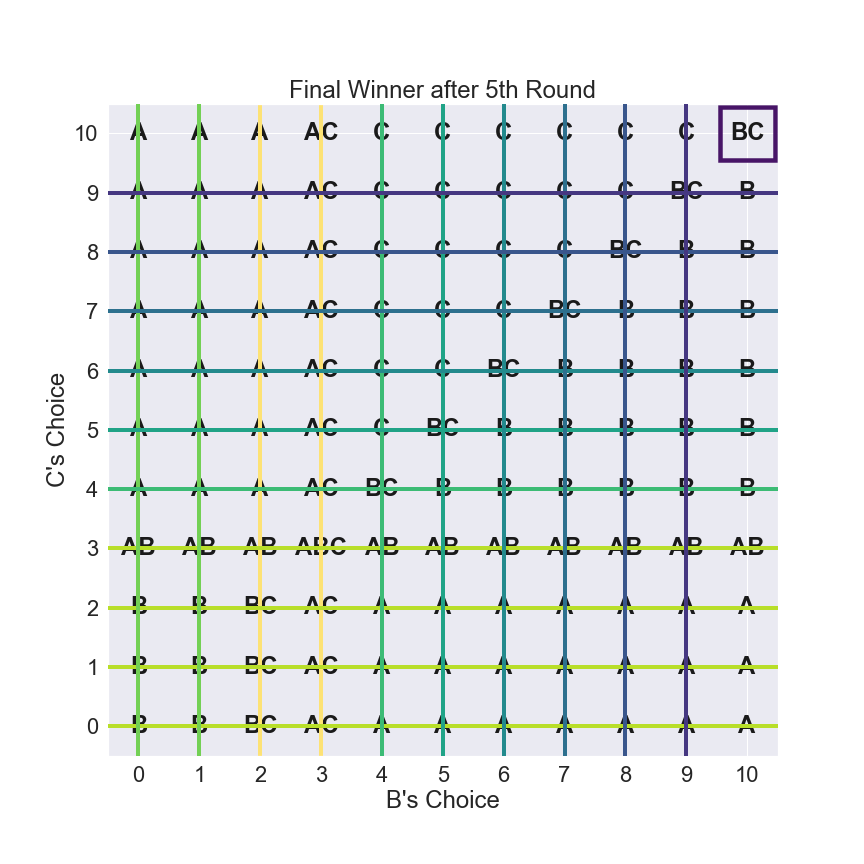Can You Be Mediocre Enough To Win?¶
Ridler Classic¶
This week’s Classic also comes from Ben Orlin, although it’s relatively mediocre compared to the Express.
In the three-player Game of Mediocrity, you win by not winning too much.
Each round, every player secretly picks a number from 0 to 10. The numbers are simultaneously revealed, and the median number wins that number of points. (If two or more players pick the same number, then the winner is randomly selected from among them.)

After five rounds, the winner is whoever has the median number of points. (Again, if two or more players have the same score, then the winner is randomly selected from among them.)
With one round remaining, players A, B and C have 6, 8 and 10 points, respectively. Player A sighs and writes down “3,” but fails to do so in secret. Players B and C both see player A’s number (and both see that the other saw A’s number), and will take care to write their own numbers in secret. Assuming everyone plays to win, what numbers should B and C choose?


